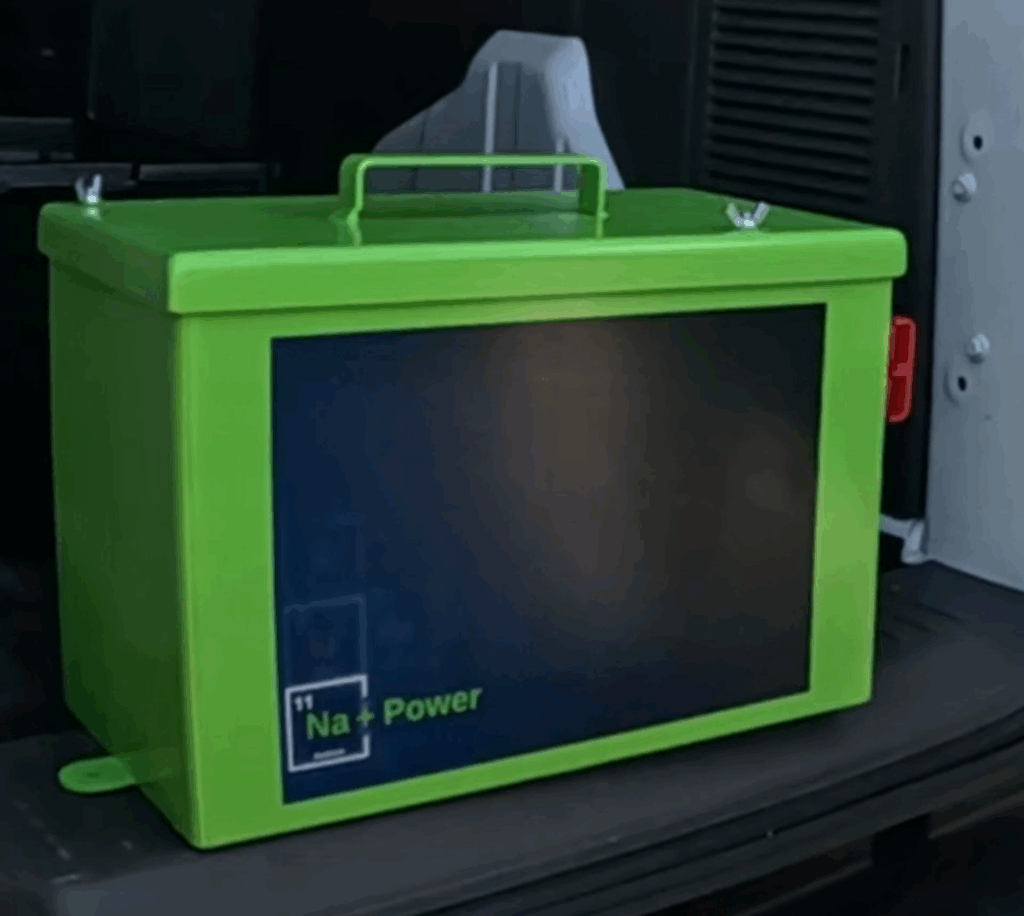| Startup, Na+ Power sees the future as one with sodium ion batteries, instead of lead-acid batteries. They had an off-grid solar system based on 12-Volt lead-acid batteries, created sodium ion replacement batteries and replaced the lead-acid batteries with sodium-ion batteries. The off-grid solar system has operated throughout last year 2024 to obtain product statistics and get operational experience with sodium-ion batteries. In 2024, the solar system has had 129 autarkic days, when no electricity was purchased from the electricity grid. The test resulted in no security problems and no fires. A small percentage of lithium-ion batteries suffer from spontaneous thermal runaway. This means that the user of the battery has property damage or even personal injury, but no idea what he had done wrong, how he could have prevented the fire, or even where he went wrong. Sodium ion batteries have a better safety record, as the electrolyte is less flammable, and the energy densities of the battery are lower. However, sodium ion batteries can experience extreme conditions when things will go wrong. This article will show a video of a recent Na+ Power battery penetration test. The startup has been doing break-and-destroy testing on their batteries to determine their safety. Their lead-acid replacement product consists of four sodium-ion cells in series, charged to a floating voltage of 13.6 Volt or 3.4 V per cell. The cells are placed in an aluminium protective housing. |

At the test site, the testing company indicated that the charge of 3.4V per cell is insufficient to see a good thermal run-away. They charged one cell to 3.95V, which is the maximum allowed by the factory, which produced the cells.
Please note that this one cell was not a normal charging level that would occur during normal usage of this battery-replacement product. The testing company also indicated that it would be difficult to do a penetration test with such a strong housing. The housing was then opened and the over-charged cell was penetrated with an iron pin. There was insufficient time to screw the lid back. The fact that the protective housing had to be opened, indicates that the housing will be strong enough for practical use-cases.
Below you can see the spectacular video of this penetration test.
| The pin which penetrated the fully-charged cell creates an internal short circuit, which causes thermal runaway, described as a lot of heat. When it gets too hot, the electrolyte starts to cook. There is an overpressure cap on each cell which bursts open in case of overpressure. When the electrolyte evaporates, the overpressure cap bursts out of the cell and you can see the gas coming out of the cell. It takes two minutes into the video to see flames when the isolation material (of the cables and the battery) catch fire. This is NOT the material inside the cell and from a battery cell point of view, there is neither a fire, nor an explosion. After the first cell bursts open, you can see propagation, as the other cells go one after the other. Na+ Power would like to prevent this propagation, and in a next version of the battery, the housing will provide less space for the cells to bulge. The different cells will then be pressed upon each other and have better thermal contact. The size of the overpressure cap will be increased to ensure that the gas can leave the cell in less time. These are the two main product improvements, that will be actioned as a result of this test. The video could be scary for some, but the test case was to on-purpose break and destroy the battery. Na+ Power deliberately put the battery under extreme conditions, where things go wrong. The evidence, however shows that we have not seen spontaneous thermal runaway cases with sodium-ion batteries. Actually, there break-and-destroy tests show that the product needs to be brought far outside of the conditions of normal use before thermal runaway occurs. |

No responses yet